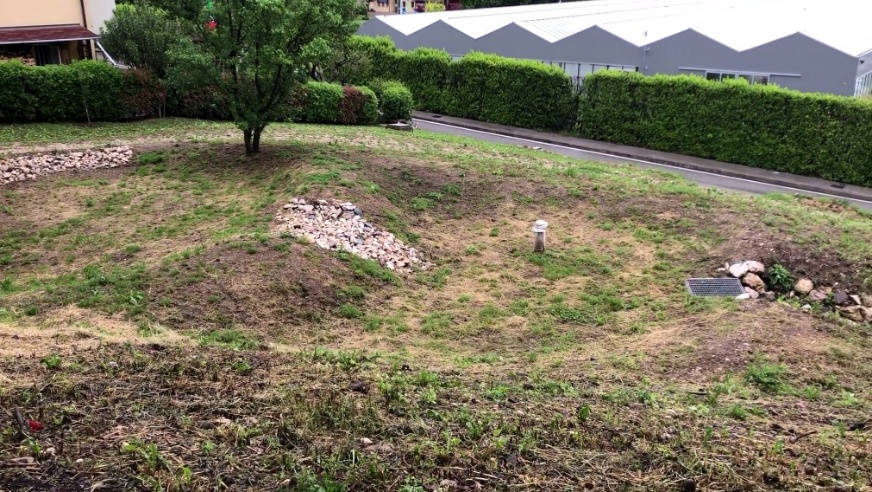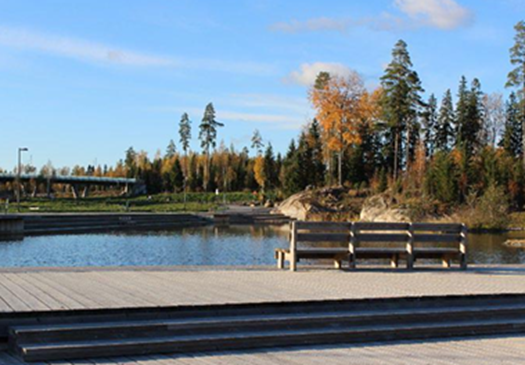- Retention basins
- Infiltration basins
- Detention basins
Basins are areas for storage of surface runoff that are free from water under dry weather flow conditions. Basins are bodies of water designed to store surface runoff. They play a critical role in stormwater management by reducing flood risk and improving water quality. The performance of basins is highly site-dependent and often requires upstream source control to function effectively. There are three main types of basins: retention, infiltration and detention, each serving a different purpose in water management.
Basin Type | Primary Function | Water Retention | Infiltration | Additional Uses |
Infiltration Basin | Temporary storage, groundwater recharge | Temporary | Yes | Recreation, groundwater recharge |
Detention Basin | Temporary storage, controlled release | Temporary | No | Recreation, flood control |
Retention Basin | Continuous water storage | Permanent | Limited | Aesthetic, habitat creation |
Infiltration Basins
Infiltration basins are shallow, vegetated depressions designed to temporarily hold runoff from impervious surfaces and allow it to infiltrate into the underlying soil and groundwater. These basins are usually dry except during and immediately after periods of heavy rainfall. Their primary function is to recharge groundwater while reducing surface runoff and associated pollutants.
Infiltration basins temporarily retain runoff and facilitate its infiltration into the ground. They are typically designed as flat, vegetated depressions, often planted with grass, or other deep root vegetation (bush or trees) to improve infiltration capacity. These basins provide water quality benefits through physical filtration of solids and sediment, adsorption of pollutants into the surrounding soil and biochemical degradation of pollutants. Environmentally, they improve soil moisture, recharge groundwater and can act as bioretention areas with engineered soils to further improve water quality. They also provide wildlife habitat and enhance landscape aesthetics.
To be effective, infiltration basins require permeable soils that allow water to infiltrate quickly. Pre-treatment, such as swales or detention basins, may be required to reduce sediment and pollutant loads prior to infiltration. When dry, these basins can be used for additional purposes, such as recreational areas: playing fields or open green spaces.

Illustration: : infiltration basin (IT)
Source: SpongeScapes project
Detention Basins
Detention basins are vegetated depressions designed to temporarily retain rainwater and slowly release it to a nearby watercourse or sewer. Unlike infiltration basins, they do not allow significant infiltration into the ground and are dry under normal weather conditions.
The primary function of detention basins is to store and gradually release stormwater to control peak flows (see also F13 Peak flow control structures). They are typically designed as vegetated depressions with outlet control structures for controlled drainage. Detention basins provide water quality benefits through physical filtration, trapping sediments with limited adsorption and degradation of pollutants. Environmentally, these basins can be landscaped to improve aesthetics and provide wildlife habitat, but also allow some infiltration or vegetation water use. They can also be used for dual purposes, such as recreational areas when dry.

Illustration: Detention Basin (UK)
Source: susdrain.org
Retention Basins
The primary function of retention basins is to store rainwater continuously, even during dry periods.
They provide long-term storage for excess rainwater and improve water quality by allowing sediments to settle and pollutants to degrade over time.
They are designed as permanent bodies of water with controlled outlets for gradual discharge. They act as sediment traps, allowing suspended solids to settle and facilitating the degradation of pollutants through natural processes. Environmentally, they support aquatic habitats, enhance biodiversity and can be integrated into urban landscapes for aesthetic and recreational purposes.
Retention basins are effective in reducing urban runoff and improving water quality. However, they require regular maintenance to manage sediment accumulation and vegetation. They are particularly useful in areas where continuous water storage is required, such as flood prone areas.

Illustration: Wet Retention Basin in Vuores, Tampere (FI)
Source: City of Tampere